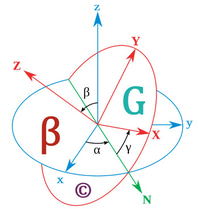The Role of Data Centers in Supporting the Internet of Things (IoT)
The Internet of Things (IoT) is revolutionizing the way we live and work. From smart homes and wearable devices to industrial automation and smart cities, IoT is connecting billions of devices worldwide. However, the success of IoT depends on a robust and reliable infrastructure to process, store, and analyze the massive amounts of data generated by these devices. Enter data centers—the backbone of the IoT ecosystem. In this blog, we’ll explore how data centers are enabling IoT, the challenges they face, and the innovations driving this critical partnership.
ELECTRICAL ENGINEERINGSUSTAINABILITYENERGY
Engr. Benjamin V. Gonzales Jr.
3/29/20253 min read
What is IoT, and Why Does It Matter?
The Internet of Things refers to the network of physical devices, vehicles, appliances, and other objects embedded with sensors, software, and connectivity. These devices collect and exchange data, enabling automation, real-time monitoring, and data-driven decision-making.
IoT is transforming industries by:
Improving efficiency and productivity in manufacturing through predictive maintenance and process automation.
Enhancing healthcare with remote patient monitoring and wearable devices.
Enabling smart cities with connected infrastructure, such as traffic lights and waste management systems.
Revolutionizing agriculture with precision farming and environmental monitoring.
How Data Centers Support IoT
Data Storage and Management
IoT devices generate vast amounts of data, often in real time. Data centers provide the storage solutions needed to house this data, ensuring it is accessible and secure.Data Processing and Analytics
Raw data from IoT devices is often unstructured and requires processing to extract meaningful insights. Data centers offer the computational power needed to analyze this data, enabling businesses to make informed decisions.Scalability
The number of IoT devices is growing exponentially, and data centers must scale to meet this demand. Cloud-based data centers, in particular, offer the flexibility to handle fluctuating workloads.Low-Latency Connectivity
Many IoT applications, such as autonomous vehicles and industrial automation, require real-time processing. Edge data centers, located closer to the source of data generation, reduce latency and ensure timely responses.Security and Privacy
IoT devices are often vulnerable to cyberattacks, making security a top priority. Data centers implement robust security measures, such as encryption and intrusion detection systems, to protect IoT data.
Challenges for Data Centers in Supporting IoT
While data centers are critical to IoT, they face several challenges in meeting its demands:
Data Volume and Velocity
IoT devices generate data at an unprecedented scale and speed. Data centers must invest in high-capacity storage and high-speed networks to handle this influx.Energy Consumption
The computational power required to process IoT data is energy-intensive. Data centers must adopt energy-efficient technologies and renewable energy sources to reduce their environmental impact.Complexity of Edge Computing
Many IoT applications require low-latency processing, driving the need for edge data centers. Managing a distributed network of edge facilities adds complexity to data center operations.Interoperability
IoT devices often use different protocols and standards, making it challenging to integrate and manage data from diverse sources. Data centers must support interoperability to ensure seamless connectivity.
Innovations Driving IoT in Data Centers
To address these challenges, data centers are adopting innovative solutions:
Edge Computing
Edge data centers bring processing closer to IoT devices, reducing latency and bandwidth usage. This is particularly important for real-time applications like autonomous vehicles and industrial automation.AI and Machine Learning
AI and ML are being used to analyze IoT data, identify patterns, and make predictions. Data centers provide the infrastructure needed to train and deploy these models.Modular Data Centers
Modular designs allow data centers to scale quickly and cost-effectively, making them ideal for supporting the rapid growth of IoT.Blockchain for Security
Blockchain technology is being explored as a way to enhance the security and transparency of IoT data. Data centers can host blockchain networks to ensure secure and tamper-proof data exchange.Sustainable Practices
Data centers are adopting renewable energy sources, energy-efficient hardware, and waste heat recycling to reduce their carbon footprint and support IoT sustainably.
The Future of IoT and Data Centers
As IoT continues to evolve, its impact on data centers will only grow. Key trends to watch include:
5G and IoT: The rollout of 5G networks will enable faster and more reliable connectivity for IoT devices, driving demand for data center resources.
AI-Driven IoT: AI will play an increasingly important role in analyzing IoT data and enabling autonomous decision-making.
Smart Cities: The growth of smart cities will require data centers to support connected infrastructure, from traffic management to energy grids.
Industrial IoT (IIoT): The industrial sector will continue to adopt IoT for predictive maintenance, process optimization, and supply chain management.
Conclusion
The Internet of Things is transforming the world, and data centers are the unsung heroes behind this revolution. By providing the storage, processing, and connectivity needed to support IoT, data centers are enabling innovation and driving progress across industries.
As IoT continues to grow, data centers must evolve to meet its unique demands. By embracing innovation, sustainability, and collaboration, data centers can ensure that they remain at the forefront of this exciting journey.





